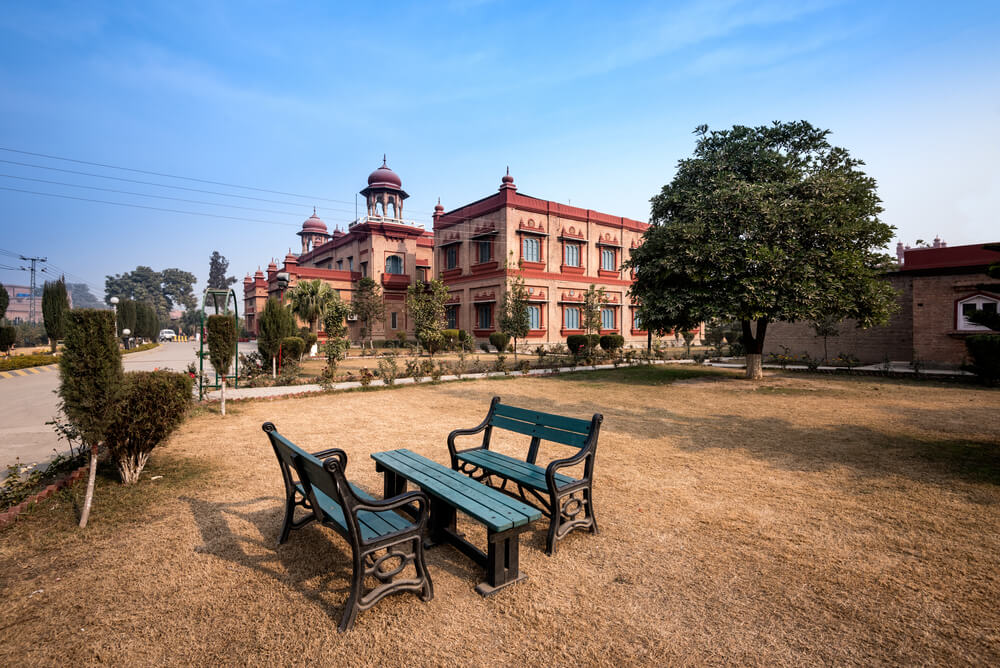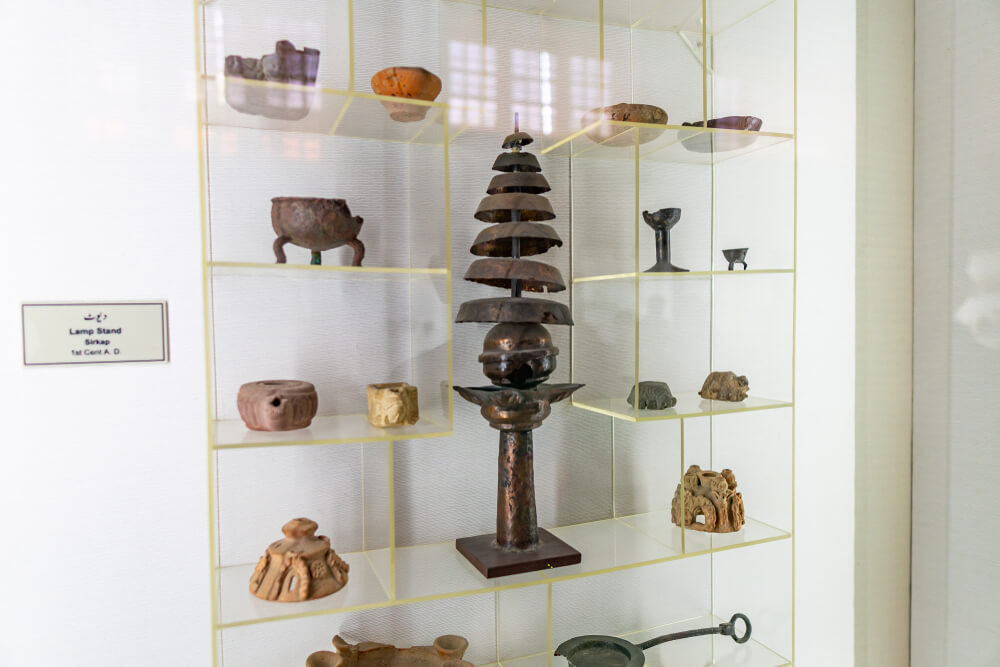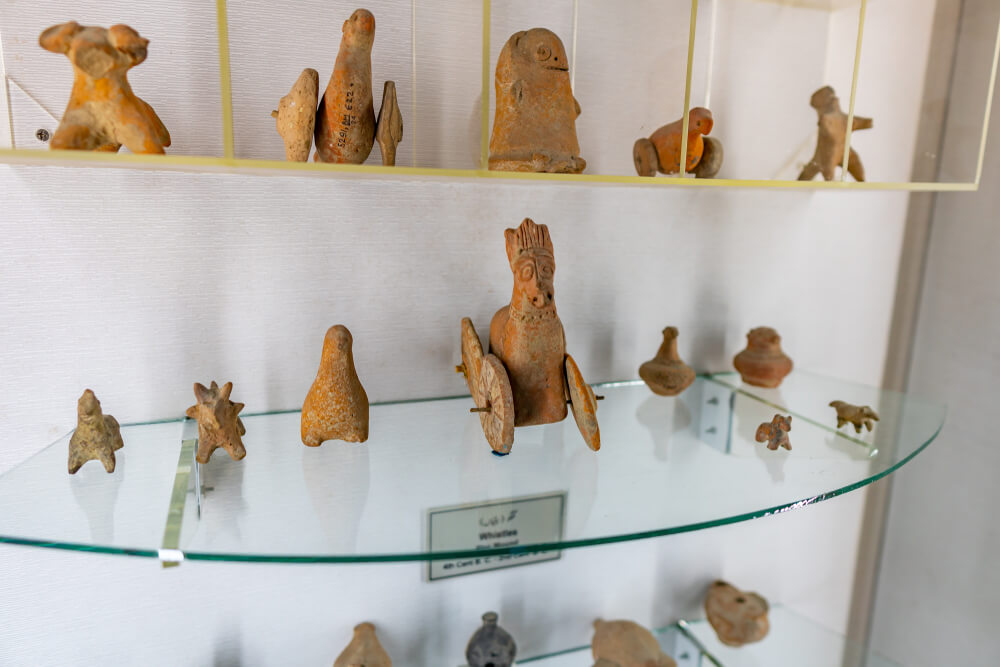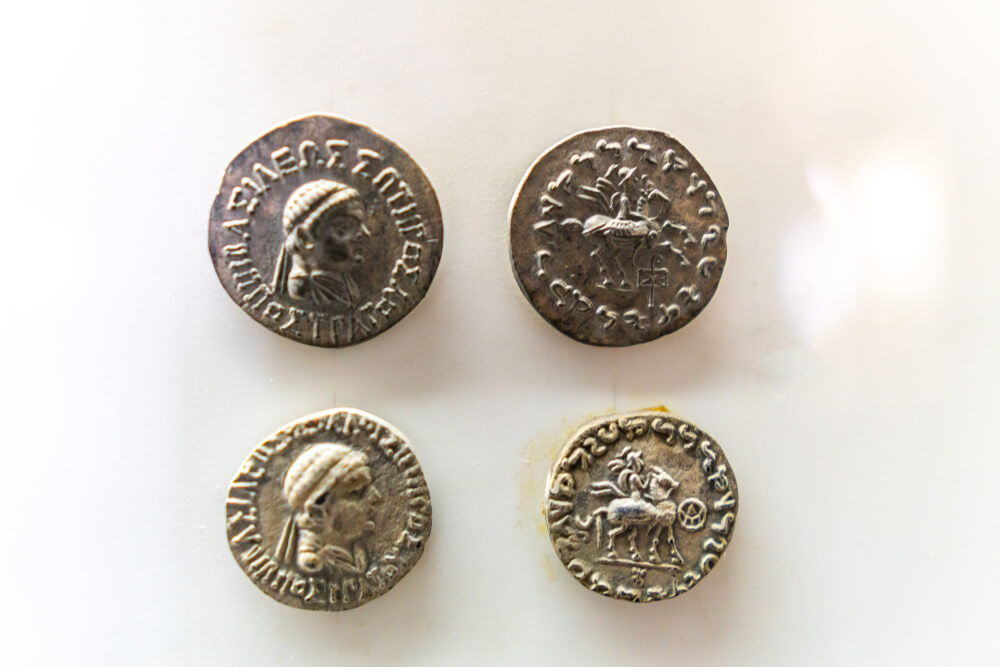Peshawar Museum
If you’re looking for a fantastic museum in Peshawar, the Peshawar Museum is a must-see. It’s home to the city’s most fascinating architecture and history. It is one of the most informative Museums in Pakistan.
The Peshawar Museum is situated in Peshawar, province of Khyber Pakhtunkhwa. It is famous for its ancient Gandhara region Buddhist artwork collection. The Peshawar Museum was established in 1907 and named “Victoria Hall” in memory of Queen Victoria. Presently it is under the custody of the Government of Khyber Pakhtunkhwa Pakistan.
History of Peshawar Museum
Peshawar museum is the fourth oldest museum in Pakistan. It presents a great display of a blended mixture of the styles of Rajasthani and British-era architectural elements.
One hundred fifty years ago, Peshawar Museum was built on Sher Suri Road opposite Governor House in memory of Queen Victoria in 1906-07. The public and the Director General of Archaeology India donated Rs 60,000 to build it.

At first, the museum’s structures were configured to house Gandharan sculptures. British scholars also excavated sculptures from other significant Gandharan sites, including Takht-i-Bahi in the Mardan District, Jamal Garhi, Shah-Ji-Ki-Dheri in Peshawar, and Sahri Bahlol.
The museum contains many treasures from the region’s ancient past, including sculptures, paintings, jewelry, and pottery. It is a fascinating look into the history and culture of the area and is sure to leave visitors amazed.
When was Peshawar Museum Pakistan Built?
The main building is an ancient structure from the British era, which was used as a club by the British princes.
In 1901, the project was started as Durbar Hall to commemorate and celebrate the late Queen Victoria. It later became a museum, which welcomed visitors in 1907 under the name Peshawar Gandhara Museum. The Governor General of the British Raj’s North-West Frontier Province (1858–1947) gave the go-ahead for constructing this Peshawar museum.
Then it was designed as a museum to display the extensive collection of Buddhist Artifacts excavated from significant parts of the province and India.
Architectural Designs
The two-story building of red bricks is a fantastic amalgamation of the Mughal Hindu, Buddhist, and British architectures.
Initially, the building of the Peshawar Museum consisted of one primary main hall and two side aisles, all the corners surmounted by four cupolas and small pinnacles.
In 1969-70 two big halls of similar design (one on each side) were added on the western and eastern sides of the building. In 1974–1975, the government constructed the second story over these side halls.
A new block of the Peshawar Museum under the project “Extension of the Peshawar Museum “was approved in 2002 at approximately Rs. 33.11 million.

The essential components of the extension of the Peshawar museum are the construction of an Islamic Block. The two adjacent galleries, two halls for the reserve collection, a conservation laboratory, offices of the Provincial Directorate, and a Cafeteria. In short, a complete renovation of the present building of the Peshawar Museum. It includes replacing the showcases, lighting, labeling, displaying all the main building galleries, replacing the ceiling and ground floor, etc.
The Peshawar Museum is not just a repository for ancient artifacts and artwork; it is also a beautiful piece of architecture representing Pakistan’s rich history and culture.
Today, the Peshawar Museum is home to various artifacts and artworks from across the region. It is a powerful reminder of the rich cultural heritage of Peshawar and the Khyber Pakhtunkhwa province.
Peshawar Museum Sections
There are seven sections of the famous Peshawar Museum. And every area of the museum is worth seeing. The museum’s design is stunning, and it’s worth a visit to see the architecture alone. But the sections inside the museum represent the history, traditions, and rich culture of Khyber-Pakhtunkhwa.
Gandharan Section
The Peshawar Museum is essential due to the world’s most extensive collection of Gandharan art. More than 30,000 rare antiques, coins, artifacts, guns, swords, Buddhist stones, sculptures, architecture, panels, stucco, relic caskets, terracotta figurines, toiletry objects, and many other antiquities are kept there. British scholars also excavated sculptures from other significant Gandharan sites, including Takht-i-Bahi in the Mardan District, Jamal Garhi, Shah-Ji-Ki-Dheri in Peshawar, and Sahri Bahlol.
The best selection of approximately 16,000 artifacts is displayed correctly in the main hall and eastern and western galleries. And more than 14,000 artifacts are lying in cupboards, including art, coins, sculptures, statues, ancient books, manuscripts, early versions of the Quran, weapons, jewelry, dresses, paintings of the Mughal, as well as Persian and local handicrafts.
Buddha Sculptures
Peshawar Museum Pakistan is famous for its most significant and one of the world’s most extensive collections of Buddhist objects. It has extensive collections of Gandhara art back to the Buddhist period. The most comprehensive collection of Gautama Buddha is in the main hall of the Peshawar museum Pakistan. Buddhist stone sculptures include Buddha’s life stories, miracles, pre-birth stories, worship of symbols, and individual and standing statues of Buddha. The most beautifully represented the pre-birth and life stories of Dipankara. Maitryakanyaka, Amara. Syama and Visvantum, stones that cover all aspects and details of life, are displayed inside the Peshawar museum Pakistan.

The most beautiful scene of the Buddha life story in stone includes Queen Maya’s dream, dream interpretation, the birth of Siddhartha, the bath, the seven steps, the school-going scene, lessons writing, and matches. Palace life, marriage, departure, ascetic life, fasting, first meditation, and demon attacks. They are Attaining enlightenment, monks, death, guarding of relics, and construction of stupas on the Relics. The Sravasti miracle and taming of a wild elephant are the two everyday miracles represented in Gandhara Art exhibited in the Peshawar Museum Pakistan.
In the eastern aisle of the museum, hair dress styles in Gandharan Art, images of the Hindu gods, and Devanagri inscriptions are on display. While in the western corridor of the museum’s main hall is Gandharan terracotta, and ceramic figurines, images of Buddha in stones, seals, stamps, and bronze tools are displayed.
The Major sculptures of Buddha in different Poses are also on display in The Peshawar Museum Pakistan:
1. Dhayana Mudra ( Meditation Pose)
2. Abhaya Mudra ( Reassurance Pose)
3. Dharma Chakra Mudra ( Turning of the Wheel of Law Pose)
4. Bhomisparsa Mudhra (Earth Touching Pose)
Coins Section
The Peshawar Museum has approximately 8625 items (stores and display). It includes different Punch marked typed coins and coins from the Indus Greeks, Scytho-Parthians, White Huns, Kushans, and Hindu Shahis. The coin collection also consists of the Islamic coins of the Ghaznavids civilization, Ghaurids civilization, Slave Dynasties, Tughlaqs dynasty, Lodhis, Mughals era, Durranis, Sikh, and The British periods.

The coins are Gold, Silver, Billon, and Copper. Their shapes are also different; some are square shape round, and some are in rectangular shapes.
The Coins Gallery houses all primary specimens from various dynasties on the museum’s first floor.
Islamic Section
The Peshawar Museum has one of the richest collections of Islamic and Quran verses displayed on the first floor.
The Peshawar Museum has credits for having ancient Arabic and Persian inscriptions; the gallery exhibits wooden facades of mosques, ceramics, Multani tiles, weapons, and the dress of Sayed Ahmad Shaheed Brailvi.
Painting of the Mughal era and Islamic Nepal work in silver and Bronze. The calligraphic specimens and the most critical displayed objects are Quran, calligraphed in Khatt-e-Ghubar dated to 1224AD, in ten scrolls, and each scroll contains three parts of the Holy Quran.
New Islamic Section
A new section, “The Quranic and Manuscripts Gallery,” was established in 2003 to extend the house of precious collections of the Holy Quran and manuscripts. This handwritten collection consists of 29 copies of the Quran, almost 65 manuscripts, and many other books.
Shah Nama of Firdusi Tausi is one of the splendid manuscripts of the 11th century. It contains about 46 illustrations after the Persia rulers.
Ethnological Section
The Eastern Gallery on the museum’s first floor houses the ethnographic collection. It represents the culture and life of tribes of the Khyber Pakhtunkhwa Chitrals and the Kalathas.
Many other objects are displayed, such as agricultural tools, jewelry, wood, Bronze, and leather household objects. There are traditional dresses and tribal costumes.
Weapons include spears, swords, daggers, bows, shields, arrows, guns, pistols, revolvers, and powder boxes.
Each object has a history, culture, and traditions of the nineteenth and twentieth centuries Pashtun.
Iranian Section
In 2003, The Iranian Consulate donated 97 pieces to the museum. These include modern specimens of calligraphy, photographs, paintings, and ornaments made of gold, silver, Bronze, and other metals.
There is also a model display of Iran’s regional and tribal dresses in the eastern aisle on the first floor.
Why is Peshawar Museum Important to History?
The Museum of Peshawar reflects the rich culture and civilization of Pashtun. The Peshawar Gandhara Museum’s exhibits and archives preserve the history and culture of the Pashtun Kalash and Hazara people throughout the century. In this place, one can see the ancient culture and amuse by the history and traditions.
Peshawar Museum Visit Timings for Tourists
The historical museum of Peshawar is worth visiting the place. It remains closed on Fridays, and from Saturday to Thursday, the timings are 9:00 AM to 5:00 PM.
Peshawar Museum Ticket price
The Peshawar Museum ticket price is only Rs. 10/– The Peshawar Museum ticket price is nothing in front of its stunning, amazing historical tour.
You can consider calling Peshawar Museum at c.
Places to Visit Near Peshawar Museum
The Peshawar Museum is rich in history and is a great example of excellent architectural design. But the museum is more than just a pretty face. It’s home to a wealth of artifacts and art from the region of khyber-Pakhtunkhwa, including Kalash, their traditions, culture, and history. There’s something for everyone here, so be sure to stop by on your next trip to Peshawar. But If you visit the Peshawar museum, you must visit the other places near it.
Masjid Mahabat Khan
It is a seventeen-century Mughal-era mosque in Peshawar. It is on the highest point of the old city and 2.1km away. It takes only 6 minute drive from Peshawar Gandhara Museum.
Bala Hisar Fort
It is a historic Fort located in the heart of Peshawar. It is 1.4km and only 4 minute drive from Peshawar Gandhara Museum.
Interesting Facts about Peshawar Museum
- Red bricks make up the museum’s structure. It is one of the large and fourth oldest museums in Pakistan.
- It is a treasure from the regions of the ancient past. British engineers constructed the venerable Peshawar Gandhara Museum.
- It is a beautiful architectural structure building. And its architecture is a fascinating mix of Indian, British and Islamic designs.
- The museum is home to a vast collection of artifacts from the country’s cultural and traditional rich regions, and it’s worth a visit if you’re ever in the area. Check out its stunning buddha, coin, and Quranic and ethnological sections, which are the best parts of the museum.
FAQ
In which province is the Peshawar Museum located?
Peshawar museum is located in Peshawar, province of Khyber Pakhtunkhwa, Pakistan.
Why is Gandhara’s art famous?
Gandhara Art is important in art and culture, especially in ancient Indian history. The general trend of Gandhara art was toward a more conceptual and idealized abstract image. Gandhara art is a style of visual art Buddhist that developed in the 1st century AD and the 7th century BC in northwestern Pakistan and eastern Afghanistan.
What is the Contact number of the Peshawar Museum?
The contact number of the Peshawar Gandhara Museum is (091) 9210985. It would be best if you talk to representatives before going on the trip.
